Getting Started#
In this section we describe how you can install AequilibraE’s QGIS plugin.
Note
The recommendations on this page are as current as of April 2024.
Installation#
AequilibraE is available from the QGIS plugin repository, and we recommend you download it using the instructions below.
Step-by-step installation#
The steps for installing AequilibraE are the same as for any QGIS plugin. Go to the Plugins panel and click on Manage and Install Plugins.

In the tab All, search for QAequilibraE.
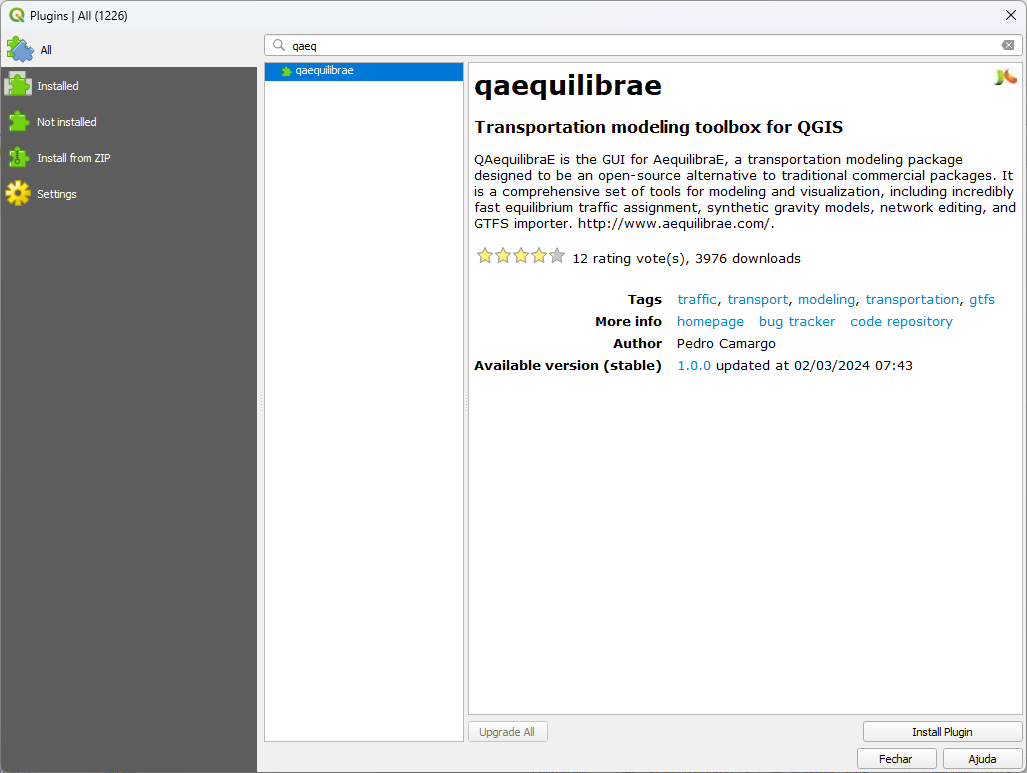
After selecting the plugin installation, you will be faced with the question of whether you want to download its dependencies, which are required for using most of the features. This is necessary because AequilibraE’s algorithms rely on compiled extensions, but it is against the QGIS’s community guidelines to upload binaries to the repository.

If you select to download the packages, QGIS will freeze for a few seconds before showing the image below.
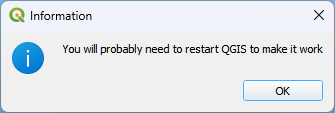
Otherwise, a message warning about installation problems will be shown, and your plugin will be non-functional.

Plugin Repository#
With the plugin repository, it is now possible to use the latest version in develop without waiting for the next release!
To configure it, let’s go once again to the Plugins menu, as shown here.
Select the Settings tab and check the box for Show also experimental plugins (step 1). The versions of QAequilibraE made available at the plugin store are not the versions for release and are labelled as experimental.
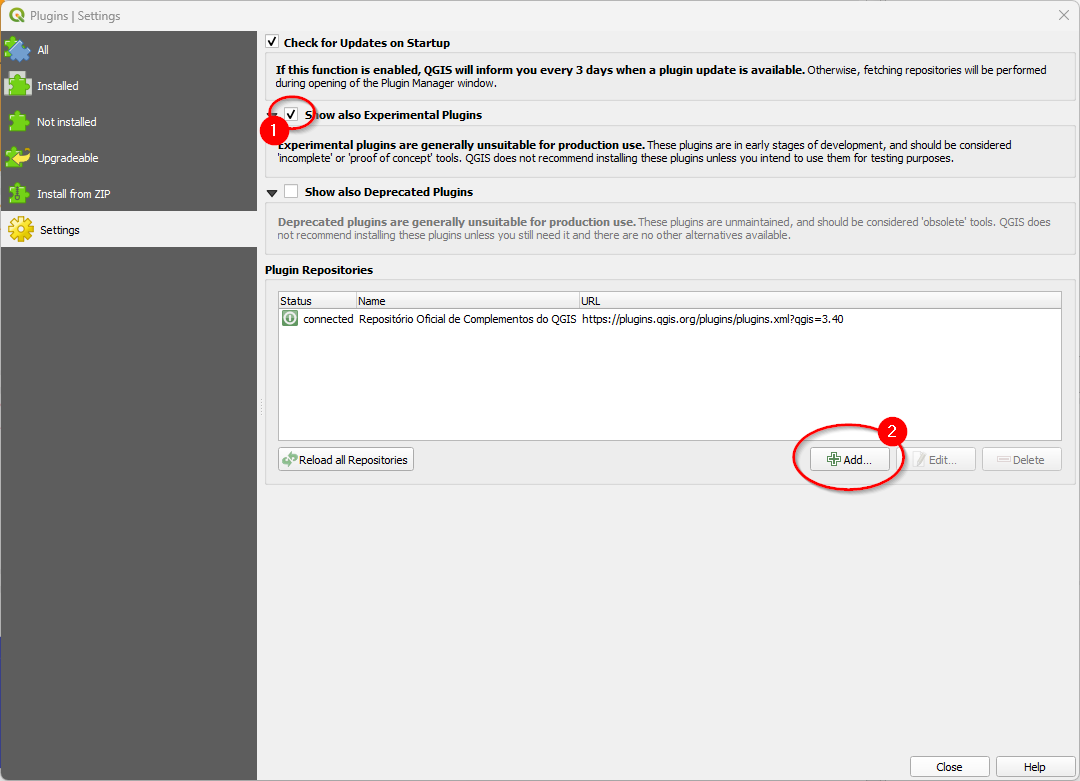
Then, click on the Add button (step 2). A new window will open. Fill the name and URL fields with the following data:
name: qaequilibrae
URL: https://aequilibrae.com/develop/qgis/_static/plugin.xml
Then, just click on the OK button.
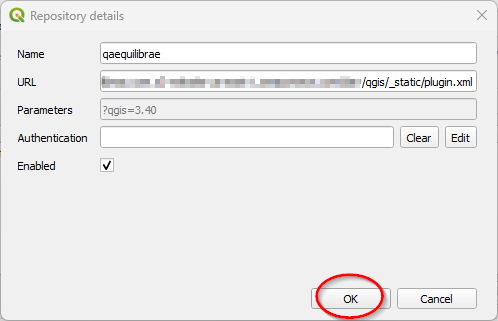
The QGIS is going to validate the provided URL. It should be really quick. You’ll notice that qaequilibrae is now appearing at your plugin repositories.
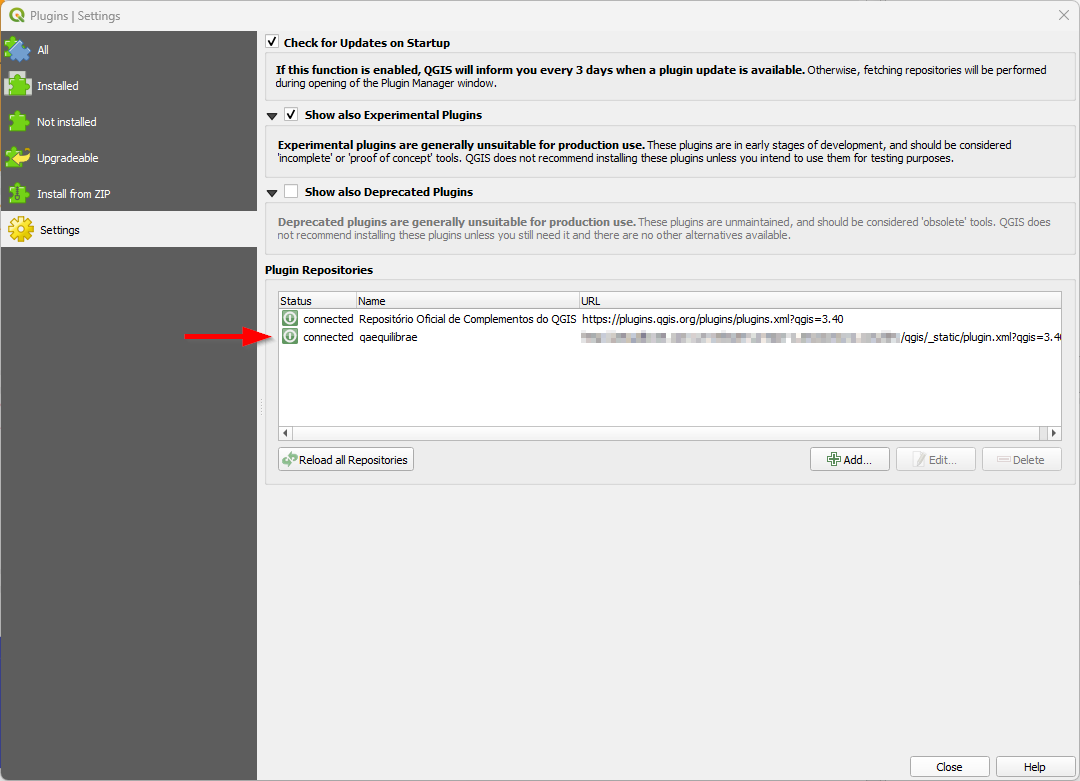
Finally, select the Upgradeable tab. You’ll notice that QAequilibraE has a newer version to be installed. Click on qaequilibrae, and hit the Upgrade Experimental Plugin button. The installation process should be the same as above, as you need to allow the installation of external libraries.
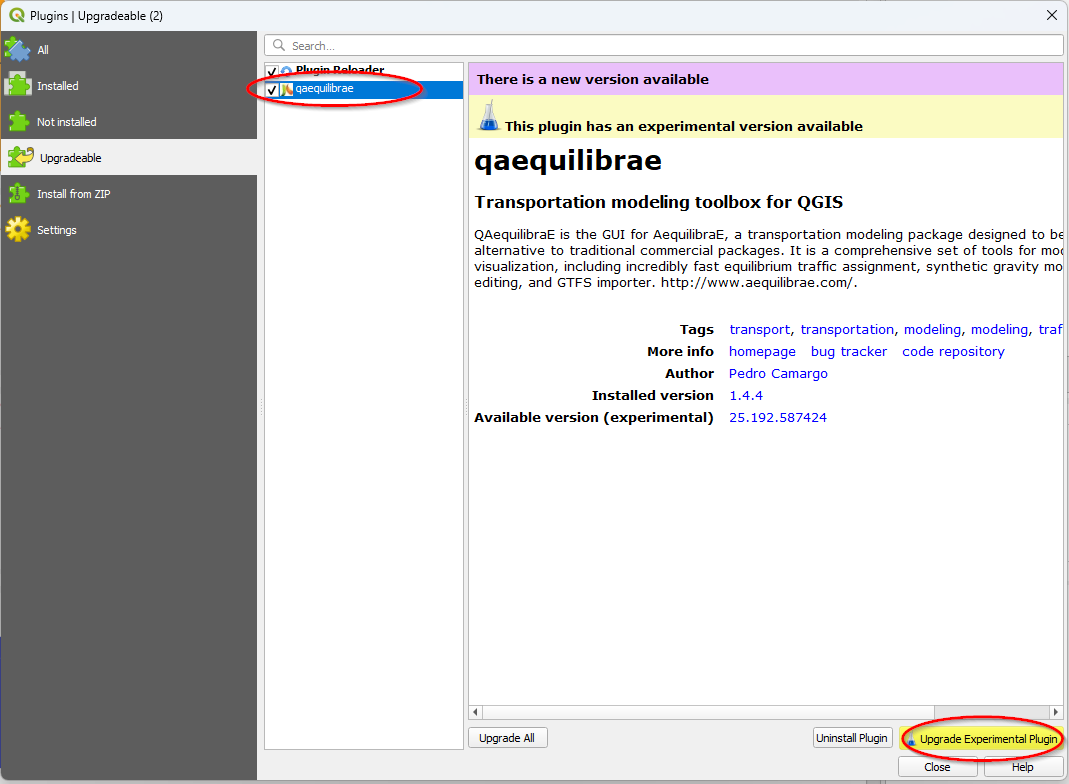
If you have any problems with this step, please check the official QGIS documentation.
Saving as QGIS Project#
Since version 1.0.1, our users can save their on-going projects directly through the QGIS saving menu! This feature allows you to save both your AequilibraE project and temporary layers. The temporary layers are stored in qgis_layer.sqlite, a database automatically created to store these layers. All you have to do is go to the Project panel and select Save or Save as, indicate where you want to store your project file, and press save!

In the interest of data integrity, if you have open AequilibraE layers into your QGIS Project and close the AequilibraE project, these layers are removed from your open QGIS project.
When reopening the QGIS project containing an AequilibraE model, you will notice that the project stored is automatically reopened by QAequilibraE.